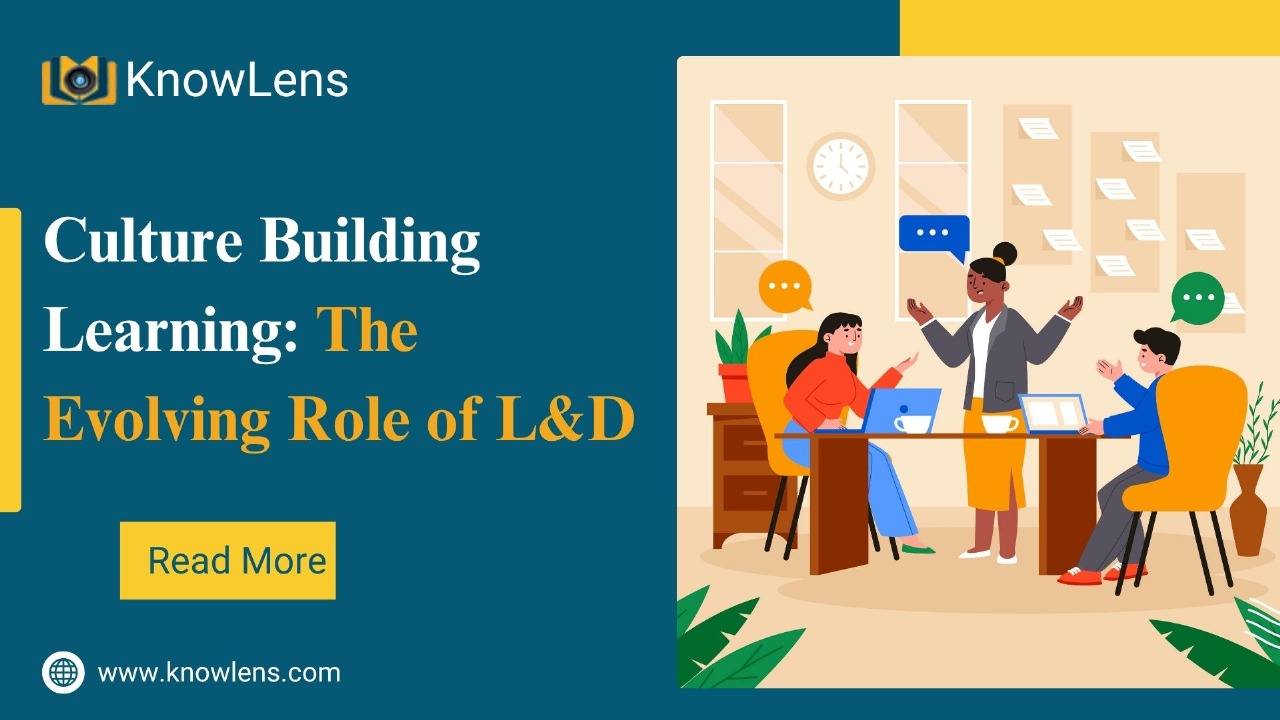Culture isn’t crafted in boardrooms, it’s shaped through daily conversations and interactions. In today’s diverse and distributed workplaces, cultural gaps can lead to misalignment and miscommunication. By anchoring culture in values, competencies and behaviors, organizations can bridge these gaps and build a more cohesive work environment. Learning and Development (L&D) is increasingly playing a critical role in this process, not just by teaching, but by embedding culture into everyday habits and behaviors.
The Communication Challenge in Culture Building
At the heart of every organizational culture is a clear, shared understanding of what the company stands for and how people are expected to work and behave. Yet, communicating this shared understanding is where many companies falter. According to Gartner, 57% of Human Resources (HR) leaders report that managers fail to reinforce the desired cultural vision within their teams and less than 23% of employees understand how organizational values connect to their daily routines.
Key communication challenges include:
- Misalignment Between Leadership and Employees: What leaders articulate often gets lost or diluted as it trickles down to teams.
- Fragmentation in Hybrid and Global Teams: Geographic and cultural dispersion leads to inconsistent interpretations of culture.
- Message Overload and Noise: In fast-paced environments, value-based communication is often lost in transactional interactions.
- One-Way Communication Channels: Traditional top-down announcements lack the feedback mechanisms needed to reinforce and evolve culture.
The Three Pillars of Culture: Values, Competencies and Behaviours
A cohesive workplace culture rests on three interconnected pillars: Values, Competencies and Behaviours. Each builds on the other, shaping how culture is defined, developed and demonstrated every day.
- Values – The “Why”
Values are the foundational beliefs that guide decisions, interactions and strategic priorities. They articulate what the organization stands for—whether it’s integrity, inclusivity, or customer focus. They are not just statements and must be deeply internalized by employees to become meaningful. When values are clearly communicated and reinforced, they create alignment and purpose across the organization.
- Competencies – The “What”
Competencies are the skills, mindsets and capabilities employees need to translate values into action. If values define what an organization believes, competencies define what it needs to do to excel.
For example, if a company values innovation, it must encourage employees to challenge assumptions, explore new ideas and experiment without fear of failure.
- Behaviours – The “How”
Behaviours are the observable actions through which values and competencies become visible and measurable. Culture lives in behaviour and L&D creates the conditions for those behaviours to be recognized, repeated and reinforced organically. This includes not just formal behaviours like performance goals, but informal ones like how feedback is given or decisions are made.
Traditional Approaches to Culture Building
Historically, organizations relied on corporate communication campaigns, internal branding and town halls. They also used leadership roadshows, employee handbooks and values posters. While these methods helped define what the culture should look like, they often lacked the depth and dynamism required to embed it in daily behaviour. Culture was treated as a one-time event or announcement rather than an evolving employee experience. That’s changing!
The Shift: How L&D Has Evolved Culture Building
L&D has shifted from knowledge delivery to culture shaping, reflecting advances in learning technology.
Early e-learning used static, text heavy modules on basic Learning Management Systems (LMS). These conveyed concepts but lacked realism and emotional engagement needed to change behaviour.
Today, L&D uses film-based learning, interactive video scenarios and immersive storytelling—formats that show real-world examples of culture in action. To enable behavioural change, L&D has transformed:
- From Event-Based to Continuous Learning: Always-on learning ecosystems that reinforce cultural principles daily.
- From Uniform to Personalized Learning: Adaptive learning paths tailored to individual values and competency gaps.
- From Passive to Experiential: Scenario-based learning grounded in real workplace dilemmas.
- From Compliance to Connection: Programs that drive intrinsic motivation, inclusion and a sense of belonging.
- From Top-Down to Peer-Led Learning: Culture ambassadors, internal influencers and user-generated content reinforcing culture in a decentralized way.
How Knowlens Powers Culture Through Visual Learning
Culture is more than policies—it’s stories, emotions and lived experience, which fits perfectly into the Knowlens approach to learning. Knowlens specializes in visual learning that transforms abstract values into concrete actions. Through web series, short videos, animations and microlearning , Knowlens delivers role-specific, device-friendly learning accessible to all, from frontline workers to senior managers. This approach addresses key challenges:
- Bridging the Gap: Translates corporate values into relatable, real-world scenarios.
- Engagement: Uses visual storytelling to sustain learner interest.
- Scalability: Accessible anytime, anywhere on mobile or web.
- Personalization: Adaptive content tailored to different roles and competency gaps.
- Reinforcement: Frequent microlearning bites and peer engagement keep culture alive.
This helps organizations embed values, develop competencies and encourage behaviours that define their unique culture.
L&D as the Architect of Culture
In a rapidly changing world, culture can’t be left to slogans or chance. It requires intentional design, communication and reinforcement. L&D professionals are uniquely positioned to support this by structuring content that precisely and scalably addresses this challenge across the organization. As architects of culture, L&D leaders must ask: What do we want our people to believe, be capable of and consistently do? The answers will shape not only culture but the future of work itself.

